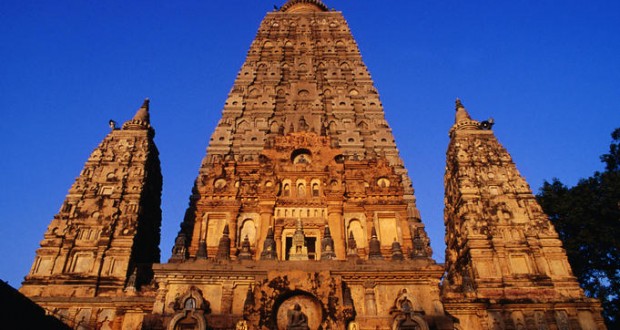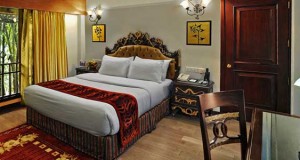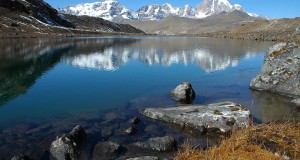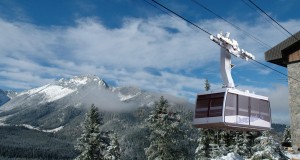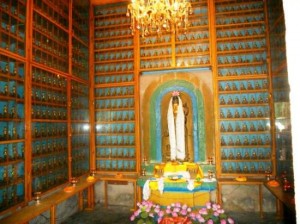 enclosed Mahabodhi Temple around 8 am, when it is peacefully deserted. The present brick structure is a relatively modern restoration (1882) of previous 11th- and 18th-century temples, yet remains more or less the same as the original 7th-century AD version. It is quite unique among other north-Indian temples in having a 50 m high pyramidal spire (capped with a stupas) instead of the usual curvi-linear summit contours. The four distinctive corner turrets erected round the base of the main temple were 14th-century additions of Burmese Buddhists, aimed at giving the structure balance. The original shrine on this site is believed to have been constructed by Ashoka in the 3rd century BC.The Mahabodhi Temple lies within a large walled enclosure dotted with numerous sculptures and ornamented votive stupas, dedicated by pilgrims. The richly carved railings to the south and west of the enclosure are Bodhgaya’s oldest remains. They are notable for their lotus, bird and animal motifs, also their jntakn stories portraying the Buddha’s previous incarnations.Entering the temple complex by the main gate, turn right for the inner shrine. This contains a colossal image of the Buddha, brightly gilded and festooned with flowers, in his ‘earth-touching’ posture. Buddha had cited the earth as witness to the austerities he had practised on his long journey to enlightenment. A saffron-robed monk will accompany you to
enclosed Mahabodhi Temple around 8 am, when it is peacefully deserted. The present brick structure is a relatively modern restoration (1882) of previous 11th- and 18th-century temples, yet remains more or less the same as the original 7th-century AD version. It is quite unique among other north-Indian temples in having a 50 m high pyramidal spire (capped with a stupas) instead of the usual curvi-linear summit contours. The four distinctive corner turrets erected round the base of the main temple were 14th-century additions of Burmese Buddhists, aimed at giving the structure balance. The original shrine on this site is believed to have been constructed by Ashoka in the 3rd century BC.The Mahabodhi Temple lies within a large walled enclosure dotted with numerous sculptures and ornamented votive stupas, dedicated by pilgrims. The richly carved railings to the south and west of the enclosure are Bodhgaya’s oldest remains. They are notable for their lotus, bird and animal motifs, also their jntakn stories portraying the Buddha’s previous incarnations.Entering the temple complex by the main gate, turn right for the inner shrine. This contains a colossal image of the Buddha, brightly gilded and festooned with flowers, in his ‘earth-touching’ posture. Buddha had cited the earth as witness to the austerities he had practised on his long journey to enlightenment. A saffron-robed monk will accompany you to 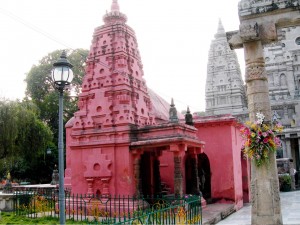 the western side of the temple, where you’ll find the famous Bodhi Tree. This sits on a small, elevated platform within a gated pavilion, and is surveyed by a small gilded Buddha. It is customary to make a donation of money, but not obligatory. The tree itself is gaily adorned with fluttering flags and streamers. It is also alive with chattering birds. For some reason, they only seem to settle and sing on this tree, and on no other. This is not the original peepal tree under which the Buddha sat to gain enlightenment, but is a direct descendant of it. Ashoka sent saplings of the original to Sri Lanka along with his son Mahinda, both to spread the message of Buddhism and to ensure that when the mother tree perished there would be saplings from grown Lankan trees to bring back and re-plant at Bodhgaya. Under the tree is the red-sandstone slab said to be the vajrasan or diamond throne on which the Buddha sat.Leaving the tree, walk clockwise round the circumference of the temple. Pilgrims follow this circuit three times in succession to complete their ritual. On your round, look out for the beautiful Lotus Pond at the northern wall of the compound. This contains a life-size Buddha, shielded by the cobra which apparently saved him from drowning while he was in deep meditation. Just past the pond is the famous Jewel Walk (chankramana)—a raised platform, lined with small pillars, where Buddha paced up and down meditating on whether or not to reveal his knowledge to the world. Further on, you’ll see the place of ‘Buddha’s footprints’, often heaped with floral offerings. Elsewhere, sandwiched between all the tiny stupas and statues in the compound, keep an eye out for athletic ascetics, usually engaged in what look like very painful exercises. Outside the entrance to the inner shrine, up some crumbling steps, there’s a small chamber containing a wreathed pile of rocks said to be ‘Buddha’s mother’.
the western side of the temple, where you’ll find the famous Bodhi Tree. This sits on a small, elevated platform within a gated pavilion, and is surveyed by a small gilded Buddha. It is customary to make a donation of money, but not obligatory. The tree itself is gaily adorned with fluttering flags and streamers. It is also alive with chattering birds. For some reason, they only seem to settle and sing on this tree, and on no other. This is not the original peepal tree under which the Buddha sat to gain enlightenment, but is a direct descendant of it. Ashoka sent saplings of the original to Sri Lanka along with his son Mahinda, both to spread the message of Buddhism and to ensure that when the mother tree perished there would be saplings from grown Lankan trees to bring back and re-plant at Bodhgaya. Under the tree is the red-sandstone slab said to be the vajrasan or diamond throne on which the Buddha sat.Leaving the tree, walk clockwise round the circumference of the temple. Pilgrims follow this circuit three times in succession to complete their ritual. On your round, look out for the beautiful Lotus Pond at the northern wall of the compound. This contains a life-size Buddha, shielded by the cobra which apparently saved him from drowning while he was in deep meditation. Just past the pond is the famous Jewel Walk (chankramana)—a raised platform, lined with small pillars, where Buddha paced up and down meditating on whether or not to reveal his knowledge to the world. Further on, you’ll see the place of ‘Buddha’s footprints’, often heaped with floral offerings. Elsewhere, sandwiched between all the tiny stupas and statues in the compound, keep an eye out for athletic ascetics, usually engaged in what look like very painful exercises. Outside the entrance to the inner shrine, up some crumbling steps, there’s a small chamber containing a wreathed pile of rocks said to be ‘Buddha’s mother’.
Over the road from the temple you’ll find the Tibetan Mahayana Monastery, built in 1938. 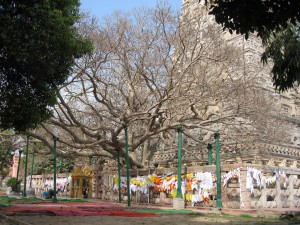 The main attraction here, just left inside the entrance, is the massive Dharma Chakra or Wheel of Law. This is a 10-m high metal drum, painted in bright reds and golds, within a richly decorated chamber. To be absolved of all your past sins (if only it were so easy), simply revolve it three times from left to right. At the rear of the chamber, there’s a showcase of sculpted Buddhas and near-Buddhas (Bodhisattvas). The largest one, Avalokiteshvara, Bodhisattva of Compassion and patron saint of Tibet.
The main attraction here, just left inside the entrance, is the massive Dharma Chakra or Wheel of Law. This is a 10-m high metal drum, painted in bright reds and golds, within a richly decorated chamber. To be absolved of all your past sins (if only it were so easy), simply revolve it three times from left to right. At the rear of the chamber, there’s a showcase of sculpted Buddhas and near-Buddhas (Bodhisattvas). The largest one, Avalokiteshvara, Bodhisattva of Compassion and patron saint of Tibet.
A 10-minute walk up the hill brings you to the Chinese Temple (1945). Turn left here for the Bodhgaya Site Museum (open 9 am-5 pm daily) with its fine collection of archaeological exhibits recovered from the local area. The gold, bronze and stone sculptures of Buddha are especially fine. Finally, visit the nearby Japanese Temple (5 minutes’ walk left, just beyond the Thai Temple). This houses a beautiful image of the Buddha, brought over from Japan.
SHOPPING
If you hunt around, you may come across some of the miniature paintings on paper or leaves, a traditional art of the villages round Bodhgaya. They generally depict scenes from the lives of Buddha and Mahavira. Nice little souvenirs are small packs of leaves from the Bodhi tree, sold along with the admission to Mahabodhi Temple. Small soft-stone images of the Buddha, carved in the nearby village of Patthalkatti are sold in a number of shops.
 WHERE TO STAY
WHERE TO STAY
There is one reasonable hotel in Bodhgaya; the Hotel Bodhgaya Ashok (tel Gaya 22708, Bodhgaya 25). It’s nothing special, and rooms are Rs750 single, Rs900 double, but at least it’s air-conditioned and the food is good. There are also two Tourist Bungalows, with reasonable double rooms from Rs85, and dormitory beds. Most low-budget travellers stay at the Burmese Monastery, which now has comfy rooms with fans, in addition to the old very basic cells. This place has a pleasant garden, small library, and popular study courses. It’s the best deal in town, but mosquitoes are especially fond of it, and you do have to behave yourself! Many of the national monasteries such as the Sri Lankan, Thai and Bhutanese, also have guest houses that welcome travellers.
EATING OUT
Plain but edible vegetarian fare including thalis, parothas and occasionally egg curries, is available at the Kalpna Hotel near Mahabodhi Temple; tasty Western-style food at the new Shiva Restaurant. During the season, a few Tibetan-style restaurants open up. If Spartan living gets too much, lash out on a big meal at the Hotel Bodhgaya Ashok.
GENERAL INFORMATION
The tourist office (tel 26), close to Mahabodhi Temple, is open 10 am-5 pm. It’s not very useful, but hires out decent guides.

